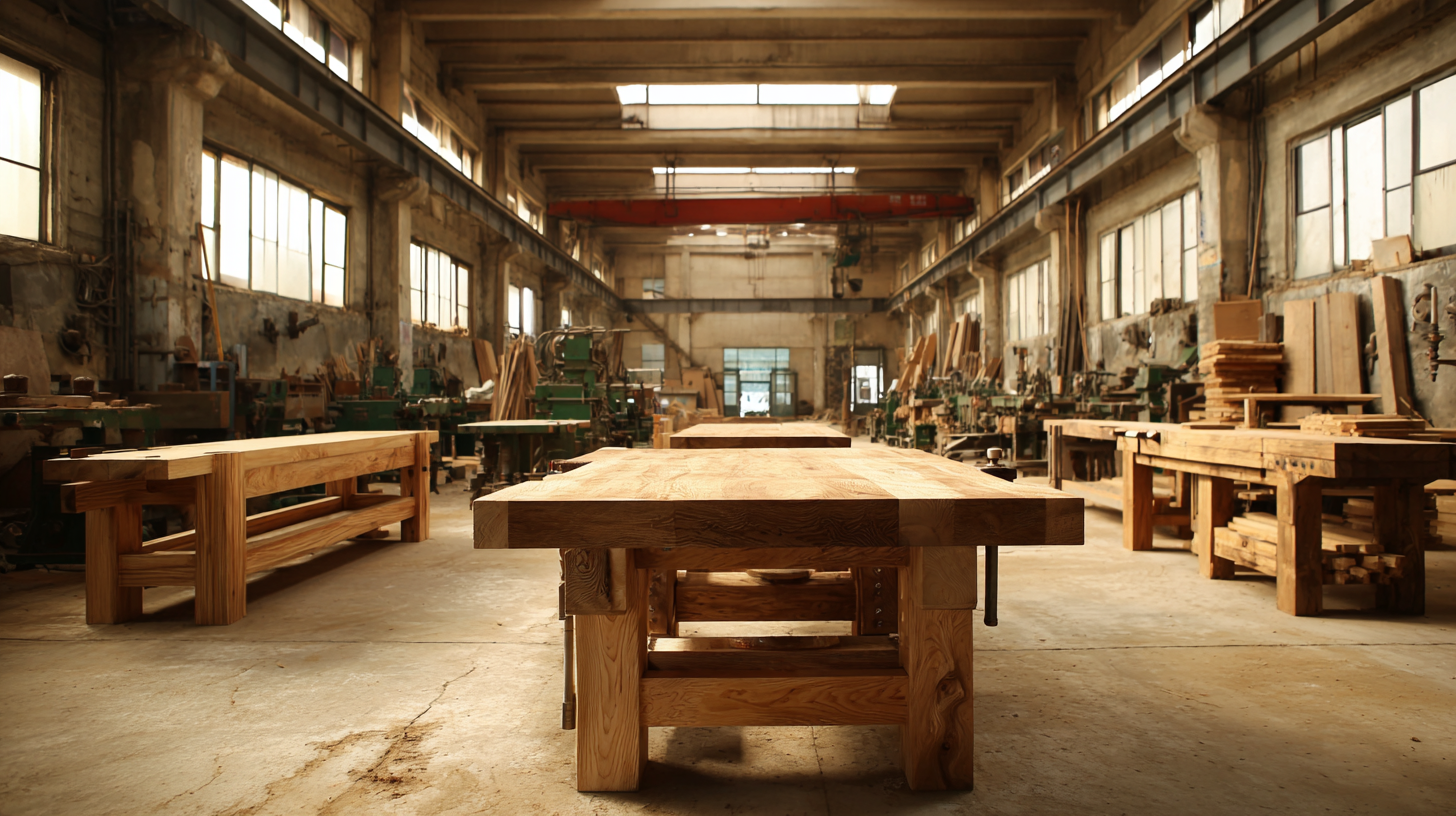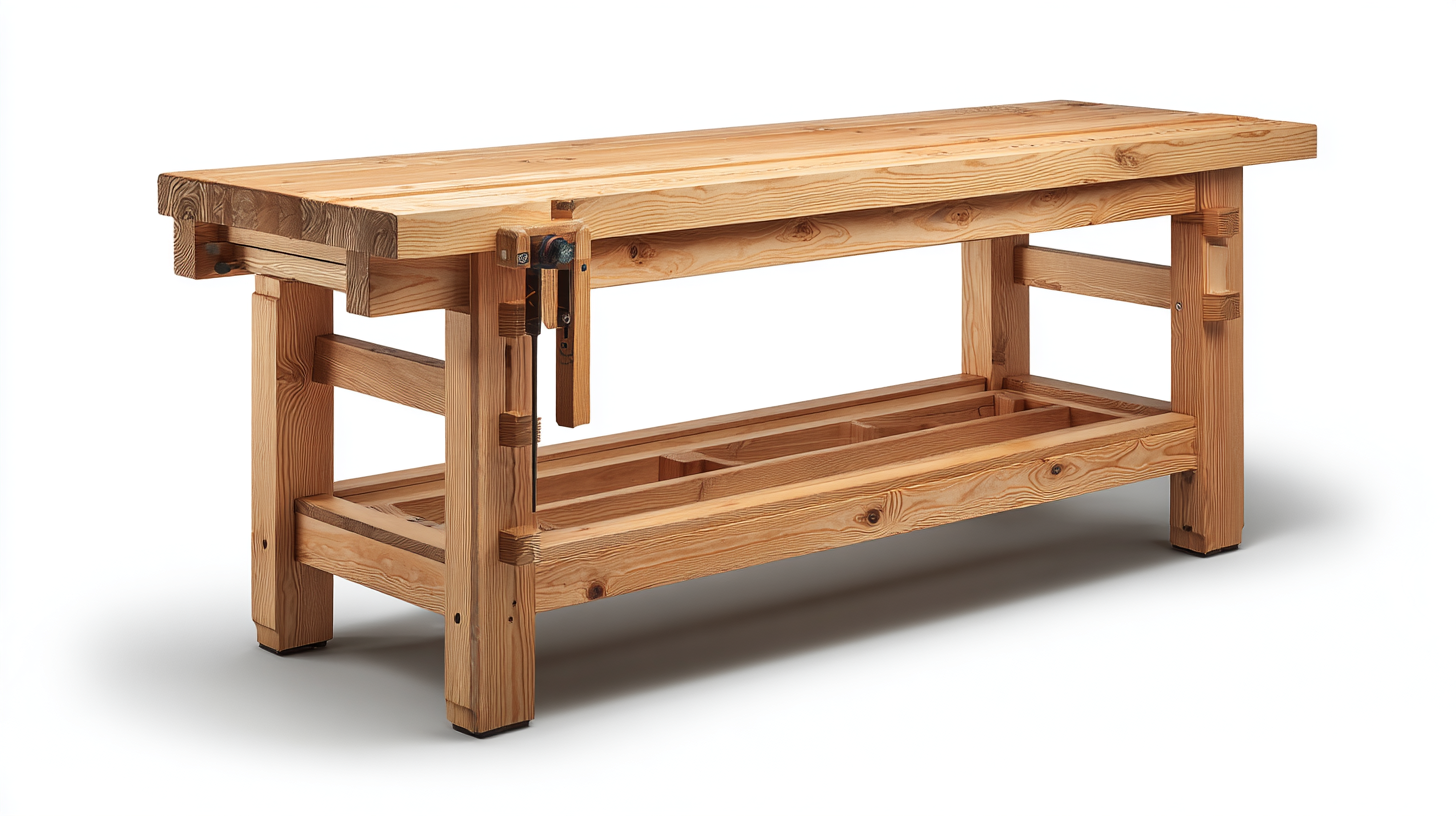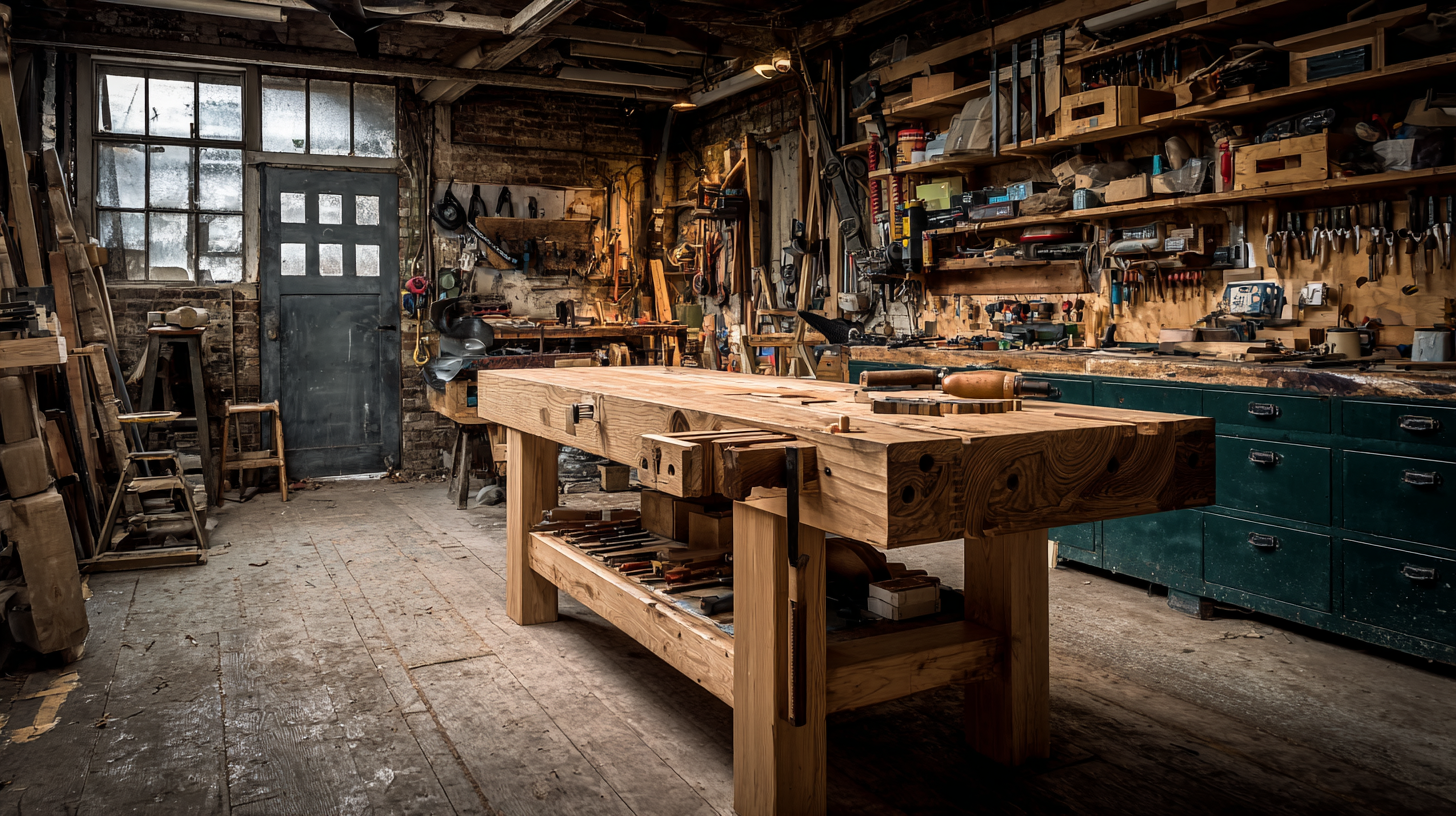Unveiling the Finest Workshop Benches from Premier Chinese Manufacturers
In the realm of woodworking and professional craftsmanship, the quality of your tools and workspace can significantly influence the outcome of your projects. One of the most critical elements in any workshop is the workbench, a fundamental piece of equipment that serves as the heart of all operations. This blog aims to unveil the finest workshop benches from premier Chinese manufacturers, exploring the industry production standards that define excellence in design and functionality. By utilizing cutting-edge digital technologies, these manufacturers are setting new benchmarks for durability, versatility, and user-friendliness. Join us as we delve into the reasons why investing in high-quality workshop benches is essential for both hobbyists and professionals alike, ensuring that your workspace not only meets but exceeds your crafting needs.

Key Factors to Consider When Selecting High-Quality Workshop Benches
When selecting high-quality workshop benches, several key factors come into play that can significantly enhance both usability and durability. Material quality is paramount; benches made from solid hardwood, steel, or high-density polyethylene provide a sturdy foundation for various tasks. According to a recent industry report by Grand View Research, the global workbench market is expected to reach USD 2.7 billion by 2027, underscoring the growing demand for reliable and well-constructed workstations.
Additionally, bench design features like adjustable height, integrated storage options, and mobility greatly influence functionality. A versatile workshop bench can accommodate different tasks and preferences, making it essential to assess your specific needs before making a purchase.
**Tips:** Always look for benches that come with user reviews or ratings. Many manufacturers now offer guarantees or warranties; this not only reflects their confidence in product quality but also provides peace of mind to users. Furthermore, choose a bench that has enough surface area for your projects; working with limited space can hinder productivity.
Understanding the Importance of Material Quality in Workbench Manufacturing
When choosing a workbench, the quality of materials used in its manufacturing plays a crucial role in determining its durability and performance. Premium Chinese manufacturers understand this need and invest in high-grade materials that provide both strength and stability. Whether it's heavy-duty steel or engineered wood, the right material enhances not only the workbench's lifespan but also its ability to withstand daily wear and tear.
Tips: When assessing a workbench, always look for features like reinforced legs and robust surface finishes to ensure longevity. Consider benches that offer protective coatings, as these can resist stains, scratches, and moisture, keeping the work surface functional through heavy use.
Furthermore, the choice of material often influences the workbench's weight capacity and modularity. A sturdy, well-crafted workbench can support a variety of tasks, from intricate woodworking to heavy machinery projects. Investing in a quality workbench means ensuring that it can adapt to various needs, making it a versatile addition to any workshop.
Tips: Evaluate the specific requirements of your workspace and choose a material that complements your tools and workflow. A workbench made of mixed materials might offer enhanced adaptability for various projects, while ensuring it remains lightweight enough for easy relocation within the workshop.
Unveiling the Finest Workshop Benches from Premier Chinese Manufacturers
| Model | Material | Weight Capacity (kg) | Dimensions (L x W x H) | Price (USD) |
|---|---|---|---|---|
| Workbench A | Steel & Wood | 500 | 150 x 75 x 90 cm | 299.99 |
| Workbench B | Aluminum | 350 | 120 x 60 x 85 cm | 199.99 |
| Workbench C | Laminate & Steel | 400 | 140 x 70 x 88 cm | 249.99 |
| Workbench D | Solid Wood | 600 | 160 x 80 x 92 cm | 349.99 |
Analyzing the Role of Ergonomics in Workbench Design for Increased Productivity
Ergonomics plays a critical role in workbench design, significantly influencing productivity and worker safety. As industries evolve, particularly in the context of Industry 5.0, the importance of ergonomic interventions has become more pronounced. Studies indicate that ergonomic workplace design can increase productivity by up to 25% while reducing the risk of musculoskeletal disorders. A well-designed workbench, tailored to the user's physicality and tasks, fosters a more efficient workflow and enhances overall comfort.
The integration of human-robot collaboration in workshops further emphasizes the need for ergonomic principles in design. Recent research has proposed a mathematical model aimed at optimizing these workstations by evaluating task alternatives and adjusting the workspace accordingly. By implementing such ergonomic frameworks, manufacturers can expect not only improved operator health but also increased operational efficiency, potentially cutting down production time by 15-20%. As we continue to innovate in workspace design, prioritizing ergonomics will be key to maximizing both human capability and industrial performance.

Evaluating Cost vs. Quality: Investment in Durable Workbench Solutions
When evaluating workshop benches, the balance between cost and quality is pivotal. In recent years, industry reports indicate that investing in high-quality workbenches can lead to significant long-term savings. For instance, a study by Market Research Future projects that the global workbench market will reach approximately USD 20 billion by 2027, highlighting a robust demand for sustainable and durable solutions. This growth is driven by sectors such as automotive, woodworking, and metalworking, where the reliability of workstations directly impacts productivity and safety.
Moreover, data from the National Institute for Occupational Safety and Health (NIOSH) suggests that ergonomic workbench design plays a critical role in reducing workplace injuries. Investing in a durable workbench not only enhances workers’ comfort but also boosts efficiency. It is reported that companies that prioritize the quality of their equipment can see productivity improvements of up to 30%. As such, while initial costs may be higher for premier workbench solutions from top Chinese manufacturers, the return on investment through enhanced durability and improved labor conditions is substantial, making it a wise expenditure for any serious workshop operation.
Cost vs. Quality of Workbench Solutions from Leading Chinese Manufacturers
Latest Trends in Workshop Bench Production Techniques from Leading Chinese Firms
In recent years, Chinese manufacturers have been at the forefront of innovating workshop bench production techniques. These advancements reflect the broader trend of integrating artificial intelligence into manufacturing processes, which has allowed companies to boost efficiency and precision. By embedding smart technologies, firms are not only streamlining their production lines but also enhancing the design and functionality of workshop benches to meet the evolving needs of various industries.

Moreover, the use of AI in production facilitates better resource management and predictive maintenance, enabling manufacturers to address potential issues before they escalate. This proactive approach minimizes downtime and maximizes operational efficiency, establishing a new standard in the industry. With a focus on sustainability and ergonomic design, leading workshops are now producing benches that cater to modern requirements, resonating with today’s workforce while maintaining a commitment to high-quality standards.
Footer
Resource Center
Contact Us
1901 West Main Street
Washington, MO 63090
Main Directory: 1-800-227-4873
Email: sale@pangcofurniture.com
Affiliations


